The Lost Knowledge of the Ancients: Were Humans the First?
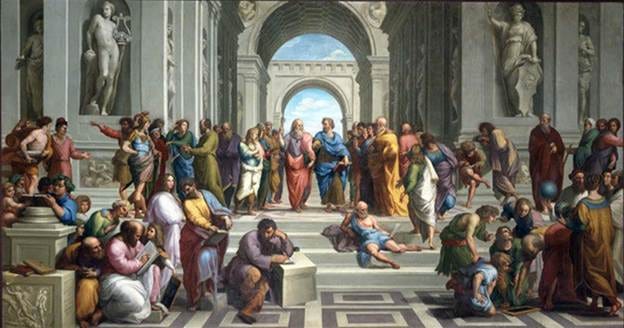
Much of modern science was known in ancient times. Robots and computers were a reality long before the 1940s. The early Bronze Age inhabitants of the Levant used computers in stone, the Greeks in the 2nd century BC invented an analogue computer known as the Antikythera mechanism. An ancient Hindu book gives detailed instructions for the construction of an aircraft –ages before the Wright brothers. Where did such knowledge come from?
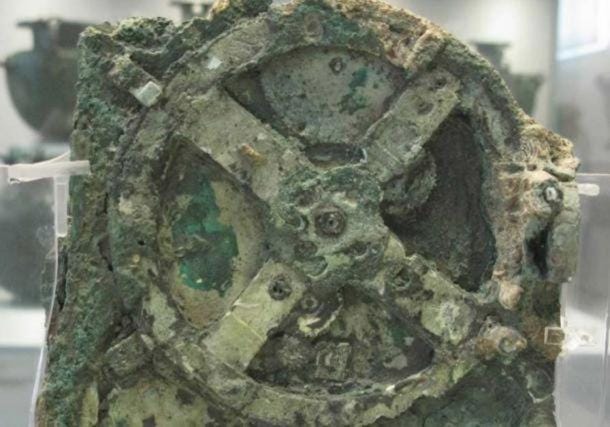
The Days and Nights of Knowledge
1500 years ago, people generally believed that the Earth was flat and rectangular. However, as early as the 6th century BC Greek philosopher Pythagoras theorized that the earth must be a sphere and in the 3rd century BC the Greek mathematician and astronomer Eratosthenes had deduced that the earth was round and computed its circumference.
Oddly enough, peoples further back in time had greater scientific knowledge than the European nations of Byzantine and Medieval times. Until the second part of the 19th century, scholars in Europe thought that the Earth was just a few thousand years old. Yet ancient Brahmin books estimated the Day of Brahma, the life span of our universe, to be 4,320 million years - not very far off from modern calculations. Modern science emerged from the medieval darkness during the renaissance. By studying classical sources humanity re-discovered old-truths that had been known by the Babylonians, Ionians, Egyptians, Hindus, or Greeks for many centuries.
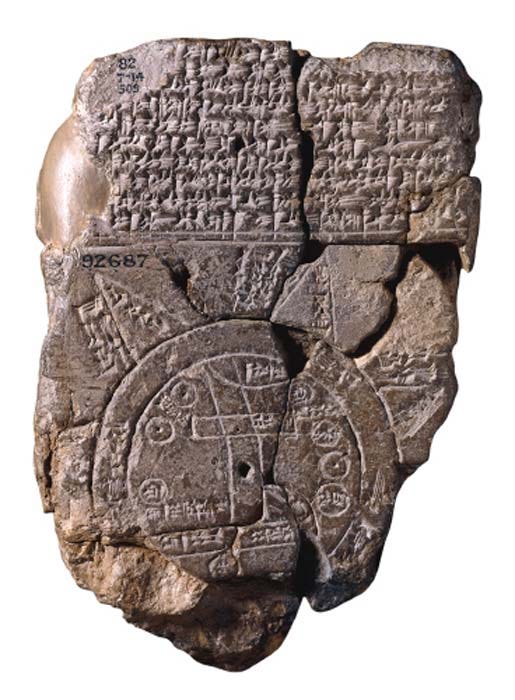
Medieval cities of France, Germany, and England were usually built by accident (without any planning.) The streets were narrow, irregular, and had no way to manage sewage. Because of the unsanitary conditions epidemics and plagues devastated these towns.
But around 2500 BC, the cities of Mohenjo Daro and Harappa, in today’s Pakistan, were as carefully planned as Paris or Washington. An efficient water supply, drainage, and rubbish chutes were provided. Besides public swimming pools, many homes also had private bathrooms. Until the end of the last century this was a luxury in Europe and America.
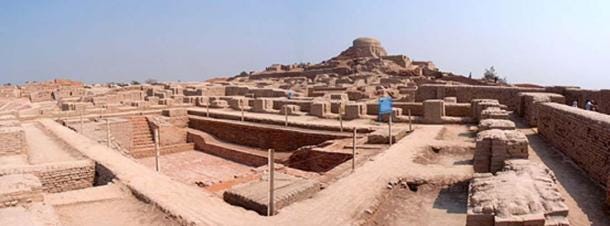
Before the latter part of the 16th century, Europeans had neither spoons nor forks on their tables –they used only knives and their fingers. Yet the people of Central America had these one thousand years before the appearance of Cortes. In fact, ancient Egyptians used spoons even earlier – in 3000 BC.
Modern science has only rediscovered and perfected old ideas, it has demonstrated that the world was much older, vaster, and globalized than was thought only a few generations before.
The Lost Documents of Mankind
One of the greatest handicaps archaeologists and historians are confronted with is a lack of evidence. If it were not for burning libraries in antiquity, mankind’s history would not have so many missing pages.
The famous collection of Pisistratus (6th century BC) in Athens was ravaged, the papyri of the library of the Temple of Ptah in Memphis were totally destroyed. The same fate befell the library of Pergamon in Asia Minor containing 200,000 volumes. The city of Carthage, razed to the ground by the Romans in the seventeen-day fire in 146 BC, was said to possess a library with half-a-million volumes. But the worst blow to mankind’s history was the burning of the Library of Alexandria in the Egyptian campaign of Julius Caesar; during which 700,000 priceless scrolls were irretrievably lost. The Bruchion contained 400,000 books and the Serapeum 300,000. There was a complete catalogue of authors in 120 volumes, complete with a brief biography for each author.
The Alexandrian Library was also a university and research institute. The university had faculties of medicine, mathematics, astronomy, literature, as well as other subjects. A chemical laboratory, astronomical observatory, anatomical theater for operations and dissections, and a botanical and zoological garden were some of the facilities of the educational institution where 14,000 pupils studied, laying the foundation of modern science.

The fate of the libraries was no better in Asia. as emperor Tsin Shi Hwang-ti issued an edict whereby innumerable books were burned in China in 213 BC. Leo Isurus was another arch-enemy of culture, as 300,000 books went to the incendiary of Constantinople in the 8th century. The number of manuscripts annihilated by the Inquisition at autos-de-fe in the Middle Ages can hardly be estimated.
Because of these tragedies we have to depend on disconnected fragments, casual passages, and meager accounts. Our distant past is a vacuum filled with random tablets, parchments, statues, paintings and various artifacts. The history of science would appear totally different were the collection of books of Alexandria intact today.
Heron, an Alexandrian engineer, built a steam engine which embodied the principle of both the turbine and jet propulsion. If the library had not been burned, we might have had a plan for a steam-chariot in Egypt. At least we know Heron invented an odometer registering the distance travelled by a vehicle. Such achievements were not surpassed, only copied. The source of modern science lies hidden far back in time.

Until documents of bygone ages are unearthed, located and recovered we are stuck with sacred texts, classical writings and myths of the past. Can these documents we know of now be considered as reliable material for reconstructing the picture of the past?
Lost Places
One hundred and fifty years ago, no scholar took the Iliad or the Odyssey of Homer as history. But Heinrich Schliemann put faith in it and discovered the legendary city of Troy. Then, like a sleepwalker, he followed the homeward route of Odysseus and discovered golden Mycenae.
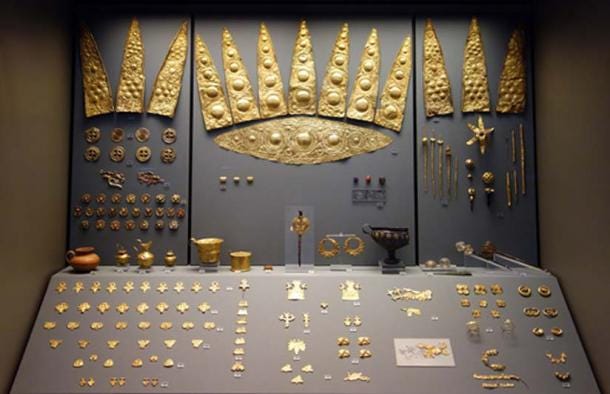
The city of Ur, referred to in the Bible, as the town from which Abraham had come, was not afforded any geographical or historical significance by the sages of the 19 th century. Actually, until recent times, few historians have taken the Bible seriously as a source of historical data. But after Sir Leonard Woolley had discovered the ancient city of Ur in Mesoptamia, the situation began to change.
Legends can therefore be interpreted as fanciful records of actual happenings. The myth of the birth of Zeus in Crete points to the Cretan origin of the Ancient Greek culture. Until 1952 when Michael Ventris decoded Linear B script of Crete and ascertained it was early Greek, no one in ancient or modern times had taken this Zeus myth seriously. So as we can see, folklore preserves history in the guise of colorful tales.
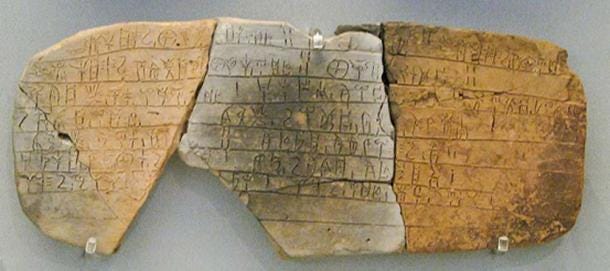
Lost Language
In his Dialouges, Plato made a reference to an archaic form of Greek language. Naturally, his contemporaries had never heard of this lost dialect. But late in the 19 th century an old script was found which, when deciphered in the fifties, turned out to be pre-classical Greek.
In the Critias, Plato tells the story of Solon to whom the priests of Sais in Egypt confided in 550 BC that 9,000 years before their time, Greece had been covered with fertile soil. Now that information is scientifically correct because the soil of Greece was rich a few thousand years ago. In the remote period the Sahara was a steppe where abundant vegetation grew. This is but one example of the climate change which has taken place in the Mediterranean basin. But how could Plato, Solon or the priests of Sais have known about soil erosion in Greece for so long a period unless accurate records had been kept for 10,000 years by the Egyptian priesthood?
Lost Art
But even further back in time there were other ebbs and flows of cultural progress. The rock paintings of aurochs, horses, stags and other beasts in the caves of Altamira, Lascaux, Ribadasella and others, are masterpieces not only of prehistoric art but of art in any period.
Ancient Egyptians, Babylonians and Greeks painted stylized bulls. But the bisons or horses of Altamira or Lascaux look like they might have been painted by Leonardo or Picasso. The realism and beauty of these cave paintings make them immensely superior to the paintings of animals in Egypt, Babylon or Greece.
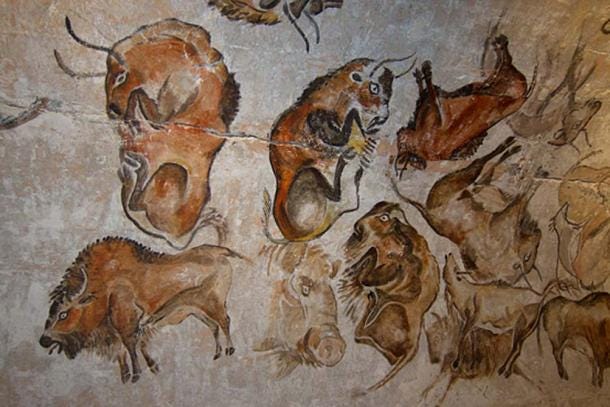
Sketches and trial-pieces have been discovered in the caves, suggesting the existence of art schools over 15,000 years ago. This is another example of the way a wave reaches a peak in the curve of civilization and then goes down.
Lost Astronomy
In recent centuries, we have been rediscovering forgotten ancient science. Almost four hundreds years ago the great German astronomer Johann Kepler correctly attributed the cause of tides to the influence of the moon. He immediately became a target for persecution. Yet, as early as the second century BC, the Babylonian astronomer Seleucus spoke about the attraction which the moon exercises on our oceans. Posidonius (135-51 BC) made a study of the tides and rightly concluded that they were connected with the revolution of the moon around the earth.
During the course of fourteen centuries-from Ptolemy to Copernicus, not a single contribution to astronomy was made. Even in Ptolemy´s time thinkers looked back to former centuries for knowledge as if there had been a Golden Age of Science in the past.
The ancient Indian astronomical text Surya Siddhanta recorded that the earth is “a globe in space”. In the book Huang Ti-Ping King Su Wen the learned Chi-Po tells the Yellow Emperor (2697-2597 BC) that “the earth floats in space”. Only four hundred and fifty years ago Galileo was condemned by the ecclesiastical authorities for teaching this very concept.
Diogenes of Apollonia (5 th century BC) affirmed that meteors move in space and frequently fall to earth. Yet the 18 th century pillar of science Lavoisier thought otherwise: “It is impossible for stones to fall from the sky because there are no stones in the sky.” We know now who was right.
Two thousand five hundred years ago the great philosopher Democritus said the Milky Way “consists of very small stars, closely huddled together”. In the 18 th century the English astronomer Ferguson wrote that the Milky Way “was formerly thought to be owing to a vast number of very small stars therin’; but the telescope shows it to be quite otherwise”. Without a telescope Democritus was certainly a better astronomer than Ferguson. It was a case of a large telescope but a small mind against a great mind without a telescope.

Seeking the Source
From this collection of examples, we can see a pattern of knowledge existing in the distant past that has been lost, only to re-emerge as ‘new’. It seems likely that other, valid knowledge existed in the past that we currently do not know of or is not considered reliable according to reasonable modern criteria. The loss of documentation means we cannot always be sure of the ancient source or have the evidence to prove its validity and so it is believed to be folklore, myth and storytelling. But the above instances are evidence of there often being some truth within the lines. Perhaps we should give some ancient sources more credit and seek to investigate the ideas further.
For ancient sources that have turned out to agree with modern truth, the question remains, who provided these insights and on what are they based? Ancient science? Ancient reason? Some other source?
By Sam Bostrom


The plagues of ignorance, hate and war, whether in the name of religion or power, have vexed human progress. We continue to worship idols and condemn ourselves to repeat this shameful history on the path of extinction.
I totally agree. The loss of the great ancient libraries was a tragedy. The library of Alexandria was burnt by Christian fanatics. SLowly over time, the true facts will be revealed. However the myths indicate the truth of some events that actually occurred but could not be interpreted correctly as our knowledge was very limited at the time.